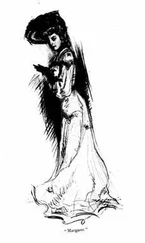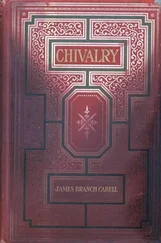James Cabell - Figures of Earth
Здесь есть возможность читать онлайн «James Cabell - Figures of Earth» весь текст электронной книги совершенно бесплатно (целиком полную версию без сокращений). В некоторых случаях можно слушать аудио, скачать через торрент в формате fb2 и присутствует краткое содержание. Жанр: Фэнтези, на английском языке. Описание произведения, (предисловие) а так же отзывы посетителей доступны на портале библиотеки ЛибКат.
- Название:Figures of Earth
- Автор:
- Жанр:
- Год:неизвестен
- ISBN:нет данных
- Рейтинг книги:5 / 5. Голосов: 1
-
Избранное:Добавить в избранное
- Отзывы:
-
Ваша оценка:
- 100
- 1
- 2
- 3
- 4
- 5
Figures of Earth: краткое содержание, описание и аннотация
Предлагаем к чтению аннотацию, описание, краткое содержание или предисловие (зависит от того, что написал сам автор книги «Figures of Earth»). Если вы не нашли необходимую информацию о книге — напишите в комментариях, мы постараемся отыскать её.
Figures of Earth — читать онлайн бесплатно полную книгу (весь текст) целиком
Ниже представлен текст книги, разбитый по страницам. Система сохранения места последней прочитанной страницы, позволяет с удобством читать онлайн бесплатно книгу «Figures of Earth», без необходимости каждый раз заново искать на чём Вы остановились. Поставьте закладку, и сможете в любой момент перейти на страницу, на которой закончили чтение.
Интервал:
Закладка:
For the rest,—since, as you may remember, this is the third preface which I have written for this book,—I can but repeat more or less what I have conceded elsewhere. This "Figures of Earth" appeared immediately following, and during the temporary sequestration of, "Jurgen." The fact was forthwith, quite unreticently, discovered that in "Figures of Earth" I had not succeeded in my attempt to rewrite its predecessor: and this crass failure, so open, so flagrant, and so undeniable, caused what I can only describe as the instant and overwhelming and universal triumph of "Figures of Earth" to be precisely what did not occur. In 1921 Comstockery still surged, of course, in full cry against the imprisoned pawnbroker and the crimes of his author, both literary and personal; and the, after all, tolerably large portion of the reading public who were not disgusted by Jurgen's lechery were now, so near as I could gather, enraged by Manuel's lack of it.
It followed that—among the futile persons who use serious, long words in talking about mere books,—aggrieved reproof of my auctorial malversations, upon the one ground or the other, became in 1921 biloquial and pandemic. Not many other volumes, I believe, have been burlesqued and cried down in the public prints by their own dedicatees.... But from the cicatrix of that healed wound I turn away. I preserve a forgiving silence, comparable to that of Hermione in the fifth act of "A Winter's Tale": I resolve that whenever I mention the names of Louis Untermeyer and H.L. Mencken it shall be in some connection more pleasant, and that here I will not mention them at all.
Meanwhile the fifteen or so experiments in contrapuntal prose were, in particular, uncharted passages from which I stayed unique in deriving pleasure where others found bewilderment and no tongue-tied irritation: but, in general, and above every misdemeanor else, the book exasperated everybody by not being a more successfully managed re-hashing of the then notorious "Jurgen."
Since 1921, and since the rehabilitation of "Jurgen," the notion has uprisen, gradually, among the more bold and speculative thinkers, that perhaps I was not, after all, in this "Figures of Earth" attempting to rewrite "Jurgen": and Manuel has made his own friend.
James Branch Cabell
Richmond-in-Virginia
30 April 1927
A FOREWORD
"Amoto quoeramus seria ludo"
To
SINCLAIR LEWIS
MY DEAR LEWIS:
To you (whom I take to be as familiar with the Manuelian cycle of romance as is any person now alive) it has for some while appeared, I know, a not uncurious circumstance that in the Key to the Popular Tales of Poictesme there should have been included so little directly relative to Manuel himself. No reader of the Popular Tales (as I recall your saying at the Alum when we talked over, among so many other matters, this monumental book) can fail to note that always Dom Manuel looms obscurely in the background, somewhat as do King Arthur and white-bearded Charlemagne in their several cycles, dispensing justice and bestowing rewards, and generally arranging the future, for the survivors of the outcome of stories which more intimately concern themselves with Anavalt and Coth and Holden, and with Kerin and Ninzian and Gonfal and Donander, and with Miramon (in his rôle of Manuel's seneschal), or even with Sclaug and Thragnar, than with the liege-lord of Poictesme. Except in the old sixteenth-century chapbook (unknown to you, I believe, and never reprinted since 1822, and not ever modernized into any cognizable spelling), there seems to have been nowhere an English rendering of the legends in which Dom Manuel is really the main figure.
Well, this book attempts to supply that desideratum, and is, so far as the writer is aware, the one fairly complete epitome in modern English of the Manuelian historiography not included by Lewistam which has yet been prepared.
It is obvious, of course, that in a single volume of this bulk there could not be included more than a selection from the great body of myths which, we may assume, have accumulated gradually round the mighty though shadowy figure of Manuel the Redeemer. Instead, my aim has been to make choice of such stories and traditions as seemed most fit to be cast into the shape of a connected narrative and regular sequence of events; to lend to all that wholesome, edifying and optimistic tone which in reading-matter is so generally preferable to mere intelligence; and meanwhile to preserve as much of the quaint style of the gestes as is consistent with clearness. Then, too, in the original mediaeval romances, both in their prose and metrical form, there are occasional allusions to natural processes which make these stories unfit to be placed in the hands of American readers, who, as a body, attest their respectability by insisting that their parents were guilty of unmentionable conduct; and such passages of course necessitate considerable editing.
II
No schoolboy (and far less the scholastic chronicler of those last final upshots for whose furtherance "Hannibal invaded Rome and Erasmus wrote in Oxford cloisters") needs nowadays to be told that the Manuel of these legends is to all intents a fictitious person. That in the earlier half of the thirteenth century there was ruling over the Poictoumois a powerful chieftain named Manuel, nobody has of late disputed seriously. But the events of the actual human existence of this Lord of Poictesme—very much as the Emperor Frederick Barbarossa has been identified with the wood-demon Barbatos, and the prophet Elijah, "caught up into the chariot of the Vedic Vayu," has become one with the Slavonic Perun,—have been inextricably blended with the legends of the Dirghic Manu-Elul, Lord of August.
Thus, even the irregularity in Manuel's eyes is taken by Vanderhoffen, in his Tudor Tales , to be a myth connecting Manuel with the Vedic Rudra and the Russian Magarko and the Servian Vii,—"and every beneficent storm-god represented with his eye perpetually winking (like sheet lightning), lest his concentrated look (the thunderbolt) should reduce the universe to ashes.... His watery parentage, and the storm-god's relationship with a swan-maiden of the Apsarasas (typifying the mists and clouds), and with Freydis the fire queen, are equally obvious: whereas Niafer is plainly a variant of Nephthys, Lady of the House, whose personality Dr. Budge sums up as 'the goddess of the death which is not eternal,' or Nerthus, the Subterranean Earth, which the warm rainstorm quickens to life and fertility."
All this seems dull enough to be plausible. Yet no less an authority than Charles Garnier has replied, in rather indignant rebuttal: "Qu'ont étè en réalité Manuel et Siegfried, Achille et Rustem? Par quels exploits ont-ils mérité l'éternelle admiration que leur ont vouée les hommes de leur race? Nul ne répondra jamais à ces questions.... Mais Poictesme croit à la réalité de cette figure que ses romans ont faite si belle, car le pays n'a pas d'autre histoire. Cette figure du Comte Manuel est réelle d'ailleurs, car elle est l'image purifiée de la race qui l'a produite, et, si on peut s'exprimer ainsi, l'incarnation de son génie."
—Which is quite just, and, when you come to think it over, proves Dom Manuel to be nowadays, for practical purposes, at least as real as Dr. Paul Vanderhoffen.
III
Between the two main epic cycles of Poictesme, as embodied in Les Gestes de Manuel and La Haulte Histoire de Jurgen , more or less comparison is inevitable. And Codman, I believe, has put the gist of the matter succinctly enough.
Says Codman: "The Gestes are mundane stories, the History is a cosmic affair, in that, where Manuel faces the world, Jurgen considers the universe.... Dom Manuel is the Achilles of Poictesme, as Jurgen is its Ulysses."
Читать дальшеИнтервал:
Закладка:
Похожие книги на «Figures of Earth»
Представляем Вашему вниманию похожие книги на «Figures of Earth» списком для выбора. Мы отобрали схожую по названию и смыслу литературу в надежде предоставить читателям больше вариантов отыскать новые, интересные, ещё непрочитанные произведения.
Обсуждение, отзывы о книге «Figures of Earth» и просто собственные мнения читателей. Оставьте ваши комментарии, напишите, что Вы думаете о произведении, его смысле или главных героях. Укажите что конкретно понравилось, а что нет, и почему Вы так считаете.



